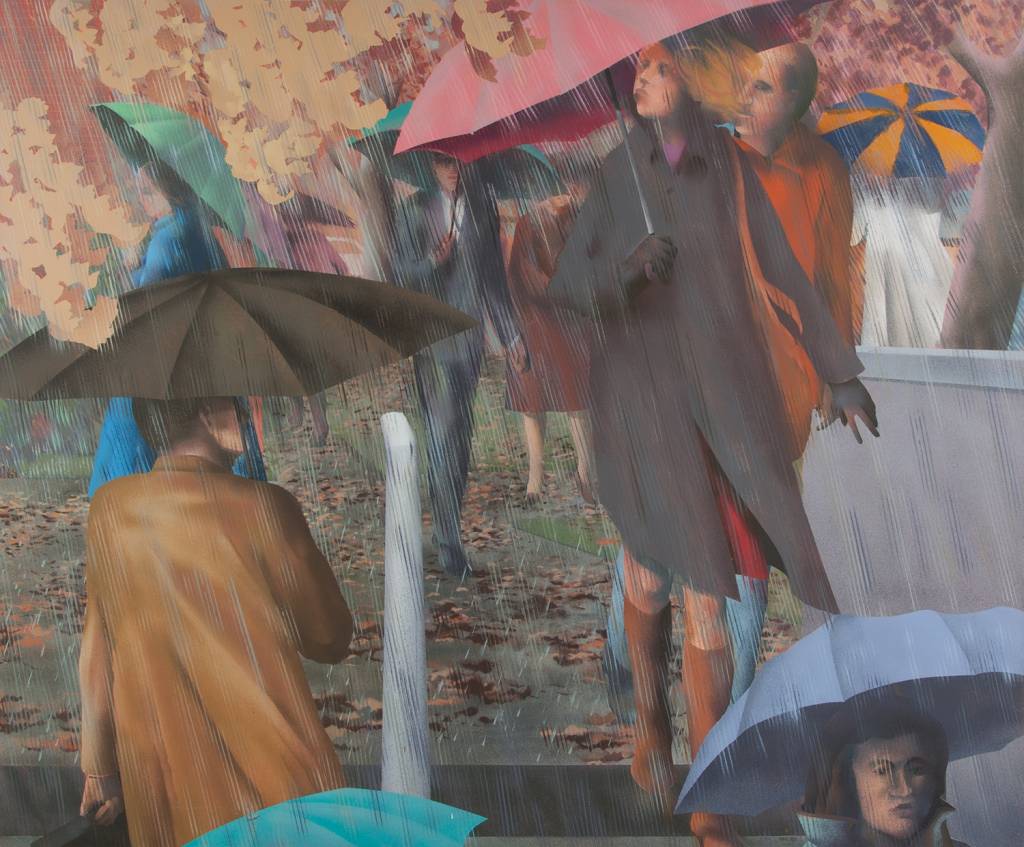Comings and Goings

Maud Gatewood, one of North Carolina’s most important 20th-century artists, was born in rural Yanceyville. At the age of 16, she enrolled in the Woman’s College of the University of North Carolina in Greensboro (today UNC Greensboro), where she was exposed to abstraction, the prevailing avant-garde art movement of the time.
After graduating, Gatewood earned her maste’s degree in painting from Ohio State University. She studied art and art history under a Fulbright Scholarship in Vienna, where she worked with the Austrian artist Oscar Kokoschka, known for his expressionistic portraits of people and the landscape. Gatewood traveled extensively throughout Europe, East and Southeast Asia, South America and North Africa. She also taught painting at UNC Charlotte, Central Piedmont Community College and Averett College in Caswell County.
Gatewood’s paintings have been exhibited widely throughout the Southeast and have received many awards, including the American Academy of Arts and Letters Award in 1972. Her work was included in the exhibition Painting in the South: 1564 – 1980, which was organized in 1983, and traveled throughout the Southeast and to the National Academy of Design in New York. Gatewood’s work was also featured in the show Nine from North Carolina at the National Museum of Women in the Arts in Washington, D.C., in 1989.
Not surprisingly, Gatewood’s early work centered on abstraction. However, in part due to her deep knowledge of international art history, her style evolved increasingly to reflect artistic styles and movements from different cultures and periods in history. For example, her figures are more symbols of human beings than realistic depictions. “Fundamentally, I believe in artistic distance,” she said. “Wax museums give me the creeps. Art is artificial, and they’re not artificial enough.”
Comings and Goings was inspired by the hustle and bustle of a North Carolina college campus on a wet autumn day. The composition is organized around the stairway handrail in the center of the painting. Around it figures come and go — up and down the stairway, across the picture plane and receding into the distance beyond. None of them interacts with another, and only the female at the bottom right of the composition engages the viewer as she descends down the stairs into a space that is beyond the confines of the picture.
Gatewood has limited the sense of pictorial depth by tilting the ground upward so that figures and forms are silhouetted against it. She gives equal importance to each element in the painting; that is, people, umbrellas, architectural forms, the patterns of leaves and the regularized diagonal lines representing heavy rainfall. She created the latter effect by using a master-striper tool that she had discovered in an automotive shop and began using in 1964. She also used stencils, templates, spray paint and brushwork, all with the goal of achieving a distillation of forms used to create her vision, rather than merely a realistic depiction of particular scene.
“What I’m trying to paint is relationships, formal relationships,” Gatewood said. “Light and color and forms. There might be messages, but I think a lot of times painters know less about what their painting says than anybody else.” Comings and Goings was executed, in her words, “after a period of suffering about where to go next.” It has been proposed that the variety of directions taken by the figures, their detachment from one another, and the stormy weather might allude to Gatewood’s psychological state at the time. This reinforces the artistic impulse to represent something deeper than verisimilitude.
In January 2023, the Endowment purchased Comings and Goings from the Mary D.B.T. Semans Foundation. Mrs. Semans was the great-niece of James B. Duke and a Trustee of The Duke Endowment for 55 years. She was also a life-long patron of the arts and an energetic advocate for social justice, economic opportunity, racial equality, housing for the poor, cultural enrichment opportunities for the hearing and sight impaired and a host of other worthy causes.
